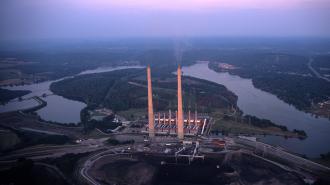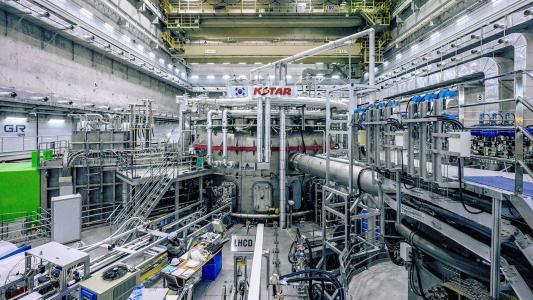Governments and leaders worldwide are attempting to decarbonize their electricity grids and meet net zero targets to combat climate change.
Only a few large, industrialized countries have achieved generally clean electricity grids: France, Sweden, Norway, Switzerland, and Paraguay. These countries have achieved clean grids with a baseload of reliable, clean energy — either nuclear energy or hydropower — with some wind and solar power.
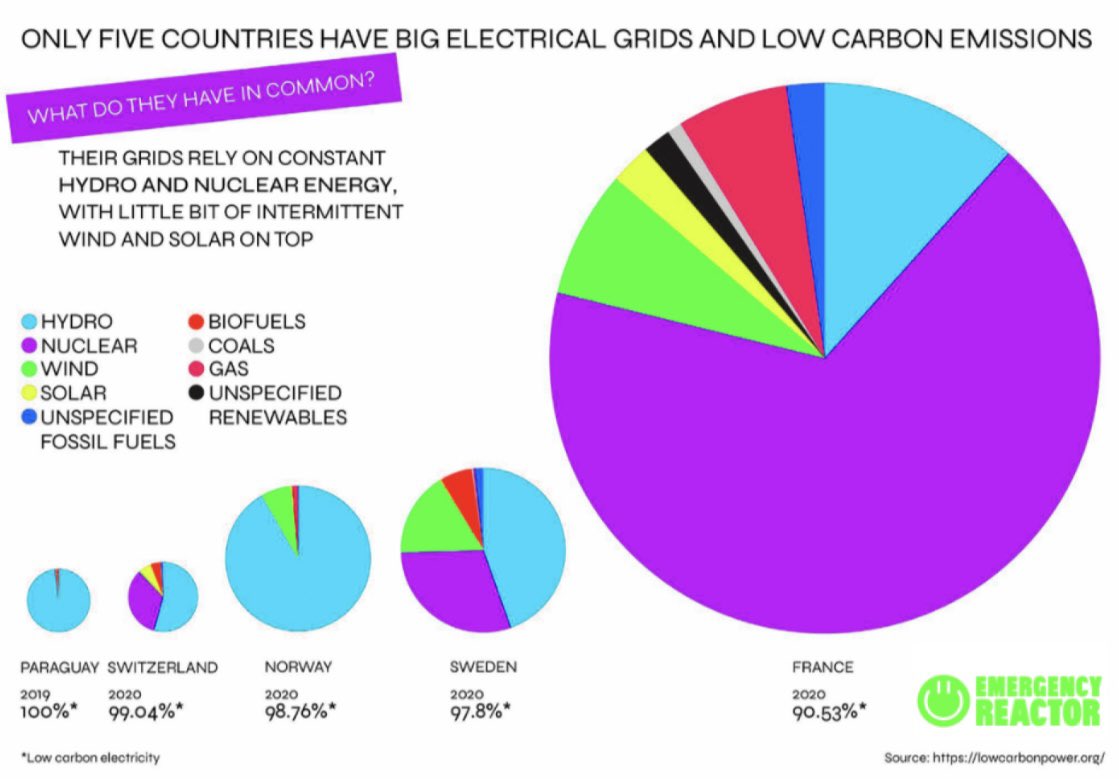
While hydro has long been a popular source of clean, reliable electricity, it is geographically limited and is increasingly considered to have more environmental downsides than other sources of clean energy. Countries without the option of hydropower have instead decarbonized with primarily nuclear energy.
In France, the oil crisis in the 1970s led French Prime Minister Pierre Messmer to instigate a plan to build nuclear power plants en masse. The country decarbonized its grid by building 56 new nuclear reactors between 1974 and 1989, and it has maintained one of the cleanest grids in the world ever since. Before the Russian invasion of Ukraine, France also enjoyed relatively cheap household electricity costs while providing some of the cleanest energy in Europe.
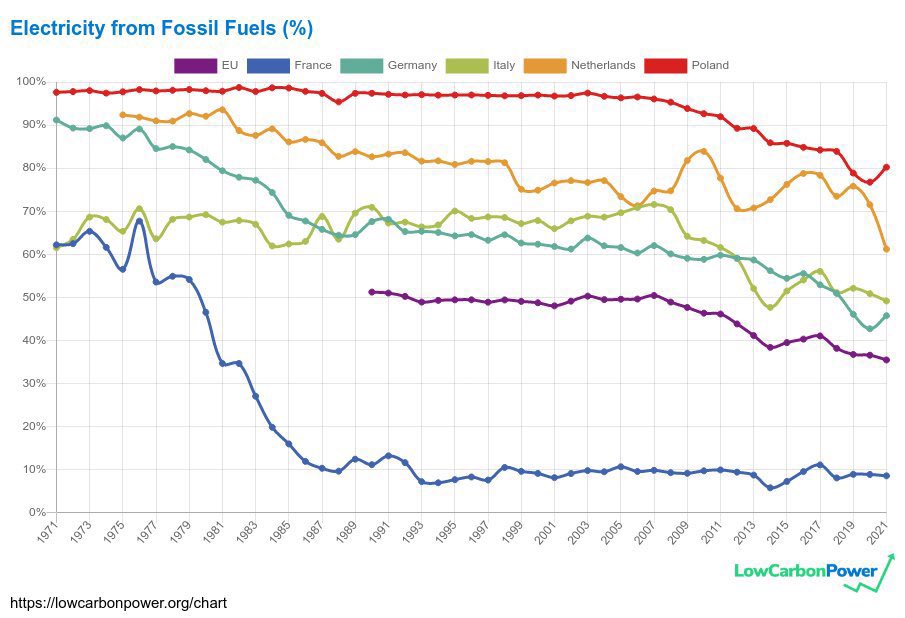
Governments are often reluctant to invest in large infrastructure programs, partly due to short-termism and partly because of the high upfront cost. In the long run, these costs are not as high as they seem when considering other substantial advantages — for example, homegrown nuclear power reduces the dependence on imported energy; nuclear plants don’t require as much backup power as renewables; and the plants can operate for at least 60 years. While many new reactors have been costly and slow to build, it isn’t obvious that the world as a whole is getting worse at building nuclear plants; some countries have recently built new reactors in only five years, and the average global build time is seven and a half years.
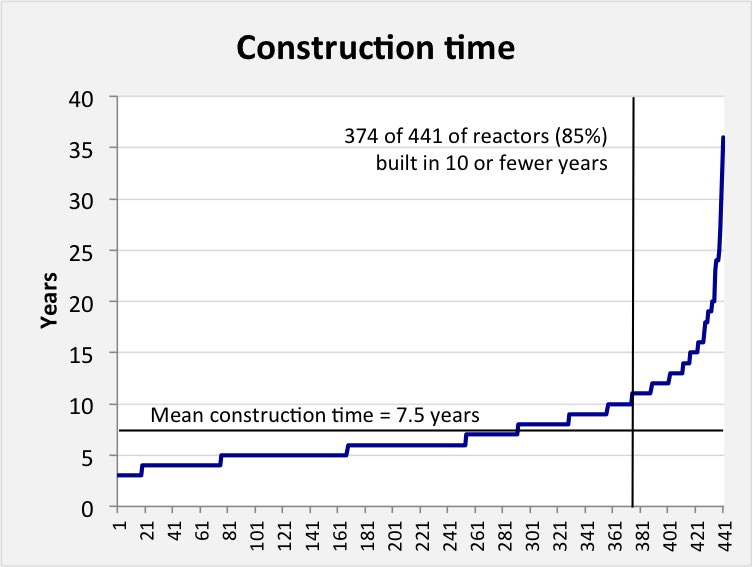
Reusing infrastructure and land
Since around 60% of nuclear’s lifetime costs are incurred during construction, one way to reduce costs is to use existing infrastructure from mothballed coal-fired power stations. Countries with previously large coal fleets can benefit from this. Placing a nuclear reactor at the site of a recently retired coal power plant means that many of the costs of new builds are removed by the existing infrastructure, which can lead to construction cost savings of 15-35%.
A US Department of Energy (DOE) report found that hundreds of coal power plant sites across the US are suitable for conversion to nuclear plant sites. DOE analysts examined 349 retired and 273 operating coal power sites across the US. They filtered out sites deemed unsuitable for nuclear reactors, such as those near fault lines. Of the remaining coal plants, the researchers found 157 recently retired and 237 operating sites to be suitable for housing nuclear reactors. That’s 80% of the coal sites in the US.
This coal-to-nuclear (C2N) transition could save millions of dollars by using existing land, reusing the coal plant’s equipment and infrastructure, such as transmission lines and switchyards, cooling ponds or towers, and civil infrastructure, such as roads and office buildings. This is also better environmentally in terms of land use since new land isn’t needed to create a power plant site, and existing sites already have transport avenues in place for construction and commuting purposes (i.e., roads).
Generating jobs
A crucial aspect of the energy transition is ensuring people aren’t left behind, which means considering workers who will lose their jobs as fossil fuels are phased out. The DOE study found that much of the existing workforce in coal power can be directly moved across to nuclear power plants, and nuclear jobs typically provide wages that are roughly 25% higher than elsewhere in the energy sector.
The US Energy Information Administration (EIA) currently projects that 28% of operational coal-fired power plants will go offline by 2035. Over the past decade, the share of electricity generated by burning coal fell in the US from 40% to around 17%, and employment in coal decreased by 50%. Not only does this source of energy need to be replaced by clean power, but the jobs do, too. Typically, when coal-fired power stations are shut, communities face substantial job losses; for example, residents of Navajo Nation communities lost 700 jobs and $30-50 million in revenue after a coal power station was closed.
Companies like TerraPower, a Bill Gates-backed nuclear startup, are attempting to drive a C2N transition. TerraPower is building a demonstration unit of its Natrium sodium-cooled fast reactor at a retired coal plant site in Wyoming. The reactor siting is currently undergoing regulatory review.
Cleaner air
Although the emphasis of the energy transition is usually on tackling the emissions causing climate change, another significant environmental benefit is air quality. Globally, an estimated 5.13 million excess deaths a year are due to air pollution from burning fossil fuels. Fine particulate matter in the air heavily impacts human health, with effects concentrated on people who live near coal-fired power stations, who are typically also from the poorest communities and suffer ongoing health issues as a consequence of exposure.
A C2N transition could, therefore, significantly improve air quality in communities around the country, reduce deaths of the elderly, and lead to better human health and environmental standards.
In addition to lowering investment costs, streamlining regulatory review, tackling climate change, and ensuring that our energy needs are met, a successful C2N initiative may also help ensure that people aren’t left behind. Once coal-dependent communities also stand to gain jobs and better health due to cleaner air, making this transition a win-win.
We’d love to hear from you! If you have a comment about this article or if you have a tip for a future Freethink story, please email us at [email protected].
